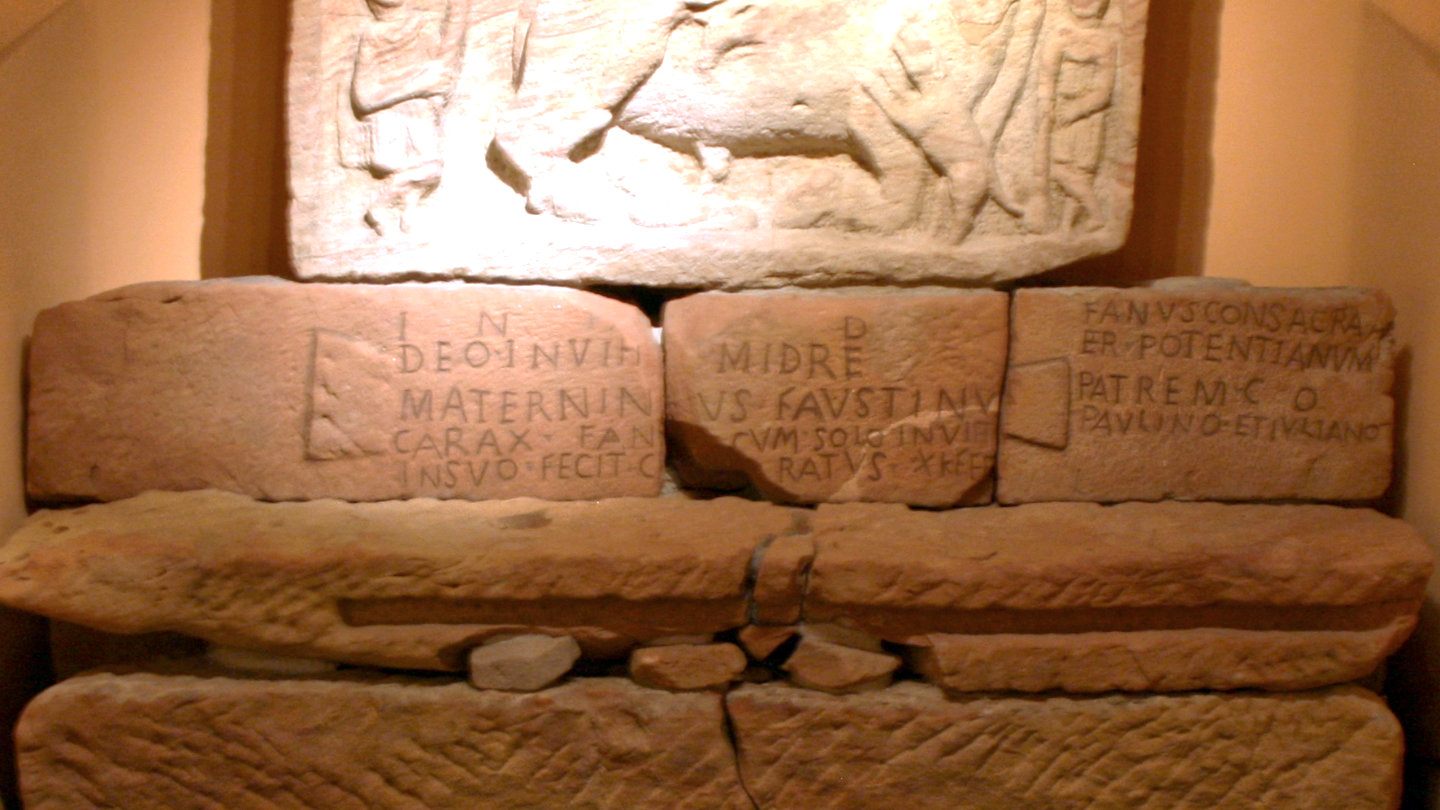Monumentum
Inscription of Corax Materninius Faustinus of Gimmeldingen
The inscription was located at the base of the main Tauroctony of the Gimmeldingen Mithraeum.
The New Mithraeum
27 Jan 2022
Updated on Oct 2023
The full article is reserved for our members.
Log in or create a free account to access the entire site.
L.H.0.045.
In h(onorem) d(omus) d(ivinae) / deo inviht[o] (sic!) Midre (sic!) / Maternin[i]us Faustinu(s) / carax (sic!) fan[um] cum solo inviht[o] / in suo fecit c[ onsac]ratus XI k(alendis) Feb(ruariis). Fanus consacrat(us) / per Potentianum / patrem co(n)s(ulibus) / Paulino et Iuliano /l(ibens) l(aetus) m(erito).
l. 2: Midre: Sprater reads Mithre.
l. 5: XI k.

